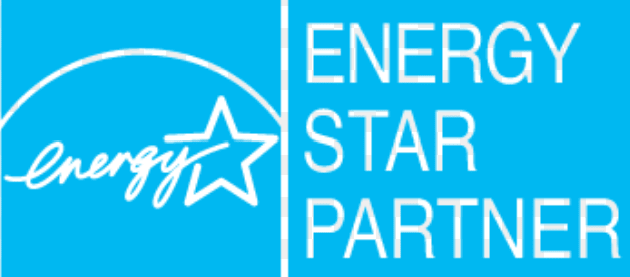Design for Maintenance
1.
Ease of Maintenance by Design
Our consultants will propose smart design features that simplify building maintenance needs through their entire life cycle.
2.
Lower Ownership Costs, Higher ROI
Reduce your monthly maintenance costs across your entire building portfolio, and increase the financial performance of your properties.
3.
Minimize Repairs and Waste
Avoid equipment breakdowns and frequent part replacements. Simplify your inventory and minimize the waste produced by repairs.
Why
EOS Labs
Every consultant on our team has at least 10 years of experience in design, construction, maintenance, sustainability, or facilities management.
Buildings Served
energy savings
Risk-Free Service!
-
Credentials
-
Professional Engineers - PE
-
Certified Energy Manager – CEM
-
LEED ACP(BD+)
-
PhD
-
ISO 9001 Auditor
-
RFMP and more

Our Foundation
1.
Design Expertise
Our consultants have decades of design experience in multiple sectors and projects sizes/complexities.
Healthcare | Retail | Commercial Real Estate | Industrial | Restaurants | Hospitality | Critical Environment | Education | Aviation | Oil & Gas.
2.
Maintenance Expertise
Our consultants have 50+ years in combined experience managing maintenance and operation for 1000s of buildings for leading brands and fortune 500 companies.
3.
Energy Management Expertise
Our Consultants have worked on energy management for portfolios of 1000+ of buildings in USA, Canada, and MENA.
BMS and Controls | Utility Contracts | Renewables | Efficiency Upgrade.
4.
ENERGY STAR & LEED
Our consultants have deep experience of the programs, and requirements of ENERGY STAR and LEED, and have helped large number of building to achieve certifications and recognition
LEED | ENERGY STAR Certified | Designed to Earn ENERGY STAR.
5.
Software and Innovation
EOS developed a patent pending technology that helps enterprise customers to gain visibility into their buildings’ consumption and energy management.
Operation and maintenance expenses (O&M) can represent 60-80% of building lifecycle costs, according to the Whole Building Design Guide, and they can be up to three times higher than initial construction costs. Traditionally, the planning and design stages of building projects have focused on the construction process, giving less priority to O&M. This represents a missed opportunity, since design decisions influence maintenance requirements.

Design for maintenance or design for maintainability (DfM) is an approach that considers O&M requirements from the start of a project, throughout the planning and design stages. DfM offers several benefits for building owners:

Lower maintenance costs throughout the service life of a building

Safer working conditions for maintenance departments

Building systems are designed to simplify routine maintenance and repairs
The design stage provides an excellent opportunity to improve “maintainability” in buildings. This is much more difficult to achieve when mechanical, electrical and plumbing systems have already been installed. DfM can be applied more effectively in new constructions, but also in buildings that will undergo a major renovation.
As an ENERGY STAR Service Partner, EOS Labs can help you reduce both energy costs and maintenance costs, in both new construction and existing properties. Unlike traditional consulting services, which are narrowly focused on specific areas, our approach maximizes ROI and the value of your building as a whole:
-
Our Value Maximizing Plan (VMP) uses a 270-point system to improve building performance across multiple areas, including energy efficiency and maintainability.
-
All our consultants have more than 10 years of experience, and we have developed a streamlined method with proven results in multiple projects.
Before joining EOS Labs, our senior consultants were in charge of building portfolios with 1000s of properties throughout the US. Our founder and CEO, Sal Alhelo managed 25% of the JCPenney portfolio, covering 16 states.
How Design for Maintenance Benefits Building Owners
Lifetime maintenance costs can be up to three times higher than construction costs, but they can be greatly reduced with smart design decisions. DfM focuses on reducing these costs, and simplifying maintenance tasks and repairs while reducing their frequency.
DfM not only saves on material costs; since maintenance procedures are simplified, skilled labor costs are also reduced. Building systems that are designed for maintenance are also less likely to suffer major breakdowns, and their owners save on emergency repairs

DfM also benefits technical personnel by improving workplace safety. Since maintenance requirements have been considered from the design stage, building systems have a layout that provides enough space for technical personnel and their gear.
-
Key equipment and components can be accessed more easily, without exposing maintenance personnel to hazards.
-
Accessibility is key when working on areas like building facades or enclosed spaces, and also when servicing equipment that is installed at height.
Consider that DfM also lowers the frequency of maintenance tasks and emergency repairs, and this reduces the associated material and labor costs. Accidents are less likely, simply because your technical staff is exposed to hazards less frequently.
Improving your Maintenance Program with Technology
There are now many tools that can improve the effectiveness of maintenance departments. Building Information Modeling (BIM) has been gaining popularity as a design and construction management tool, but its usefulness extends throughout the building life cycle.
BIM can be used to create a digital twin – a virtual building model with updated information about all its systems and key components.
-
Maintenance personnel can access the digital twin via tablets or other mobile devices, and use it as reference while working.
-
Information about building system components can be updated automatically based on data collected by sensors, or manually after conducting an inspection.
When combined, BIM and live monitoring are powerful tools for property managers. With just a few clicks, your maintenance personnel can get a clear picture of how your building is operating, and locate the issues that need urgent attention.
The building model developed during the design stage can be used for O&M after completing the construction stage. Digital twins are also useful for commissioning, since the current condition of MEP components can be easily compared with the original design.

Improving Building Maintainability During the Design Stage
The cost and complexity of building maintenance programs can be reduced with design decisions. EOS Labs can review your design documents and suggest changes that improve maintainability, and the following are some examples:
-
Selecting equipment for ease of maintenance
Design engineers have many options available when specifying equipment, and there may be several manufacturers who offer comparable performance. However, the design process should also consider the maintenance requirements of each option.
Generally, we recommend equipment brands with a local presence. This ensures the availability of parts and qualified technicians when you need repairs, and you can contact the vendor directly in case of warranty claims. If you choose equipment brands with no local representatives, you must wait for parts and service technicians to reach your location – this increases downtime.
-
Providing enough space around key equipment and system components
The space required by building systems during normal operation is not the same as the space required for maintenance purposes. The following are some important considerations when designing the layout of MEP systems:
-
Is there enough space to use tools effectively and safely?
-
Are there any obstructions that prevent the replacement of damaged parts?
-
Is there enough space for elevated platforms and scaffolding in areas where equipment is installed at height?
-
Is there enough clearance for inspection and maintenance between different pieces of equipment?
Spacing is a very important consideration in design for maintenance. When spacing is ignored, equipment may operate properly under normal conditions. However, inspections and maintenance can become very difficult when other components limit access to the piece of equipment that needs attention.
There may be cases where repairs and maintenance are impossible, unless you remove other systems temporarily – this makes maintenance tasks more expensive, time-consuming, and potentially dangerous for your staff. In general, components that tend to need frequent maintenance should be easy to access.
-
Use warning labels!
Hazards like high voltage and high temperature are not always evident, and components should be labeled when these hazards are present. At a glance, there is no way to tell the voltage of a branch circuit or the temperature of an enclosure. You can protect your maintenance staff from many accidents by simply making sure that building systems are labeled properly.
-
Centralization and redundancy
Building systems can be configured so that similar components are installed together, and this allows maintenance personnel to service different units from the same location. For example, water valves and utility meters can be installed together instead of spreading them throughout the building. This shortens the distance that must be traveled during inspections and routine maintenance, making the process more efficient.
There are applications where a building system must operate 24/7/365, and downtime can have severe consequences. For example, a data center that is processing transactions for a large e-commerce platform cannot be shut down easily. In this case, redundant air conditioning systems and backup generators are recommended. If the main system fails, the data center can continue operating with the backup system while repairs are carried out.
-
Selecting suitable materials and parts
Building system components should use materials that are suitable for each application. For example, enclosures that will be located outdoors should be waterproof and corrosion-resistant, especially in marine environments. Materials that require frequent painting should be avoided when possible, since this adds another task to your maintenance program.
Adequate material choices reduce component wear, which means you spend less on replacement parts and skilled labor over time.
-
Using standard components as opposed to custom-made parts is recommended, since this ensures the availability of replacements.
-
Using modular components when possible is also recommended, since they can be easily serviced without affecting the rest of the system.
You can also optimize inventory costs by choosing the right materials and parts. The use of expensive parts should be minimized, since they represent unused capital when kept in storage. Large inventories also require space, driving up your real estate costs.
